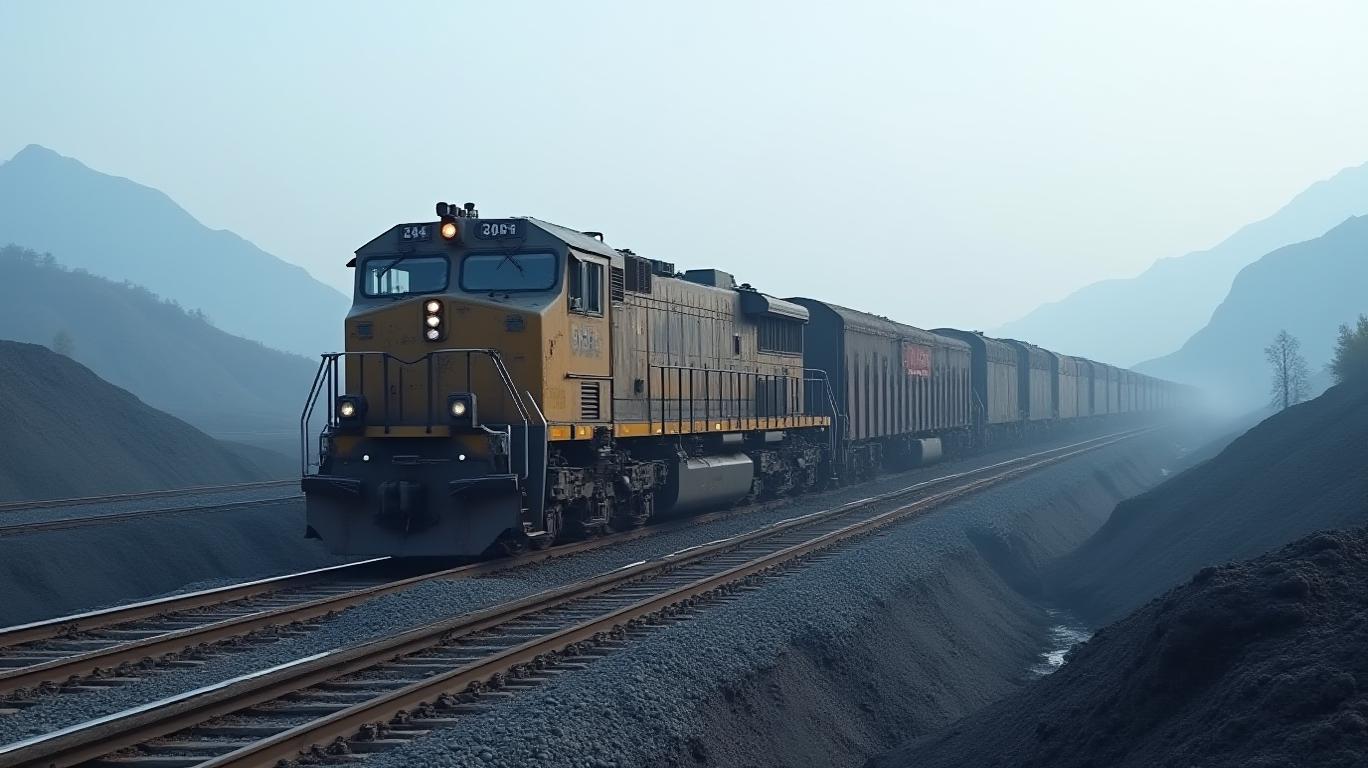Daqin Railway’s April Gains Mask Persistent Coal Demand Headwinds
The Daqin Railway, a cornerstone of China’s coal logistics network, reported a modest 1.0% year-over-year (Y/Y) increase in cargo throughput for April 2025. While this marks a slight improvement over the first quarter’s decline, the data underscores the fragile state of coal demand amid structural shifts in China’s energy policy and economy. Below, we analyze the performance, underlying trends, and risks shaping Daqin’s outlook.

Performance in Context: April’s Glimmer Amid Q1 Declines
Daqin’s April throughput growth contrasts with its Q1 2025 performance, where total cargo volumes fell to 92.72 million tons, a 5.62% Y/Y decline (see ). The drop reflects a broader slowdown in coal demand, with March 2025 volumes down 2.08% Y/Y to 35.27 million tons. Despite April’s uptick, the year-to-date figures suggest lingering challenges, including lower average daily throughput (1.137 million tons in March) and reduced utilization of 20,000-ton trains (53.3/day vs. prior-year levels).
Financially, the Q1 decline translated to lower revenue (CNY 17.8 billion vs. CNY 18.3 billion in 2024) and net profit (CNY 2.57 billion vs. CNY 3.05 billion), highlighting the direct link between cargo volumes and profitability.
Key Drivers of Coal Demand: A Perfect Storm of Challenges
The April improvement may reflect seasonal factors or short-term policy stimuli, but long-term risks loom large.
1. Environmental Policy Pressures
China’s commitment to reducing carbon emissions by 30% by 2030 (per the 14th Five-Year Plan) is accelerating the shift from coal to renewables. The National Coal Association warns that coal demand could drop by up to 20% by 2025, as industries adopt cleaner energy. Compliance costs for Daqin—estimated at CNY 1 billion over three years—add to operational headwinds.
2. Economic Uncertainty and Industrial Slowdown
Global economic growth is projected to remain subdued (IMF forecasts 3.0% in 2023), with spillover effects on China’s industrial sectors. Reduced steel and power generation activity, major coal consumers, could further suppress demand.
3. Volatile Coal Prices
Prices fluctuated between ¥600–900/ton in late 2023, and prolonged declines would deter coal production. Daqin’s revenue is highly sensitive to such swings, as coal accounts for 80% of its freight volumes.
4. Infrastructure Competition
Road transport’s dominance (48% of China’s freight in 2022) poses a cost-competitiveness threat. Meanwhile, rail expansion plans (6,000 km of new lines by 2025) may boost capacity but offer no guarantees of coal’s share of that traffic.
Opportunities and Strategic Shifts
Daqin is attempting to diversify, allocating CNY 500 million over two years to logistics and renewable energy transport. A pilot project using AI for route optimization aims to boost efficiency by 30%. However, non-coal revenue currently accounts for less than 20% of total income, limiting near-term resilience.
The Belt and Road Initiative (BRI) offers potential for international freight growth, but coal’s role in BRI projects remains unclear. While BRI-related logistics revenue could hit CNY 1 trillion by 2025, coal’s inclusion depends on geopolitical and environmental priorities.
Conclusion: Caution Amid Cyclical Recovery
While April’s 1.0% throughput growth hints at stabilization, Daqin faces formidable long-term risks. The 5.62% Q1 volume decline and projected 20% drop in coal demand by 2025 suggest a structural downturn. Investors should scrutinize the company’s ability to adapt to renewables-driven logistics and monitor key metrics:
- ****: Sustained declines below ¥700/ton could further depress volumes.
- ****: Diversification success is critical to offsetting coal’s decline.
- : Compliance costs and regulatory shifts will define the sector’s trajectory.
In conclusion, Daqin’s April gains are a fleeting bright spot in an industry under siege. Without a robust pivot to non-coal logistics or a reversal of China’s energy policy course, investors should prepare for a prolonged period of subdued performance. The railway’s future hinges on adaptation—not just to cargo volume fluctuations, but to the irreversible tides of decarbonization.
Data sources: Daqin Railway Co., Ltd. financial reports; China National Coal Association; International Monetary Fund projections; company SWOT analysis.

Comments
No comments yet